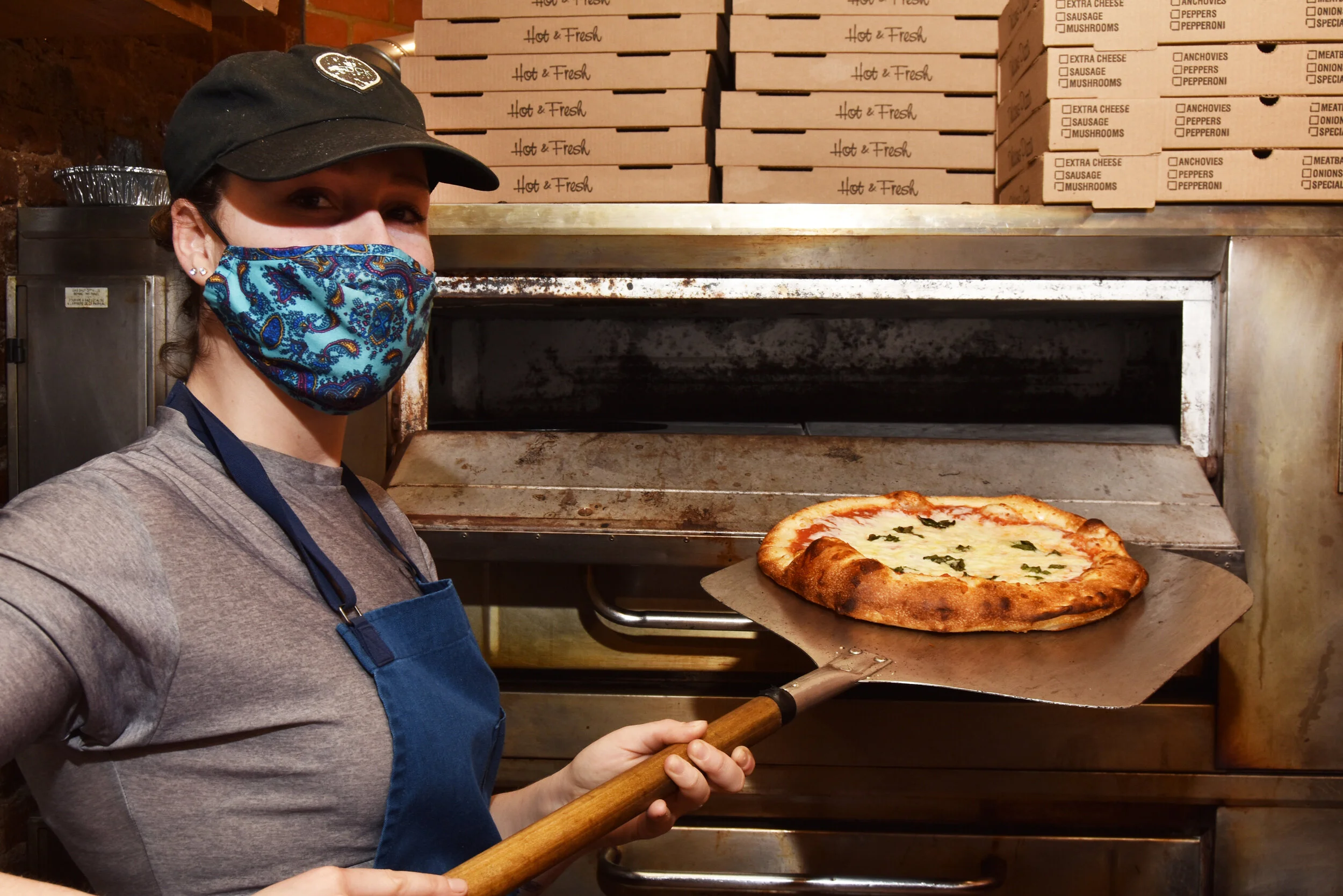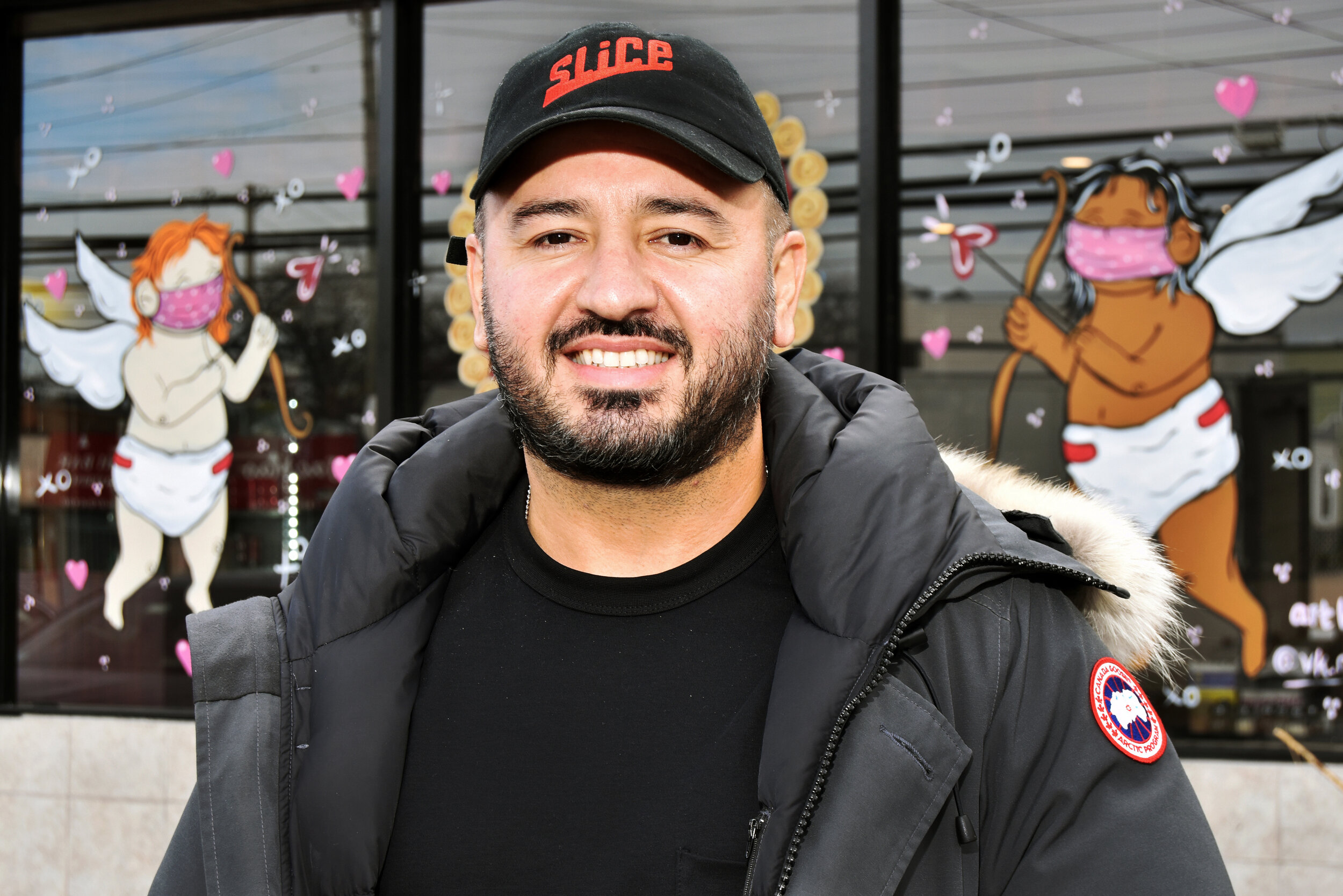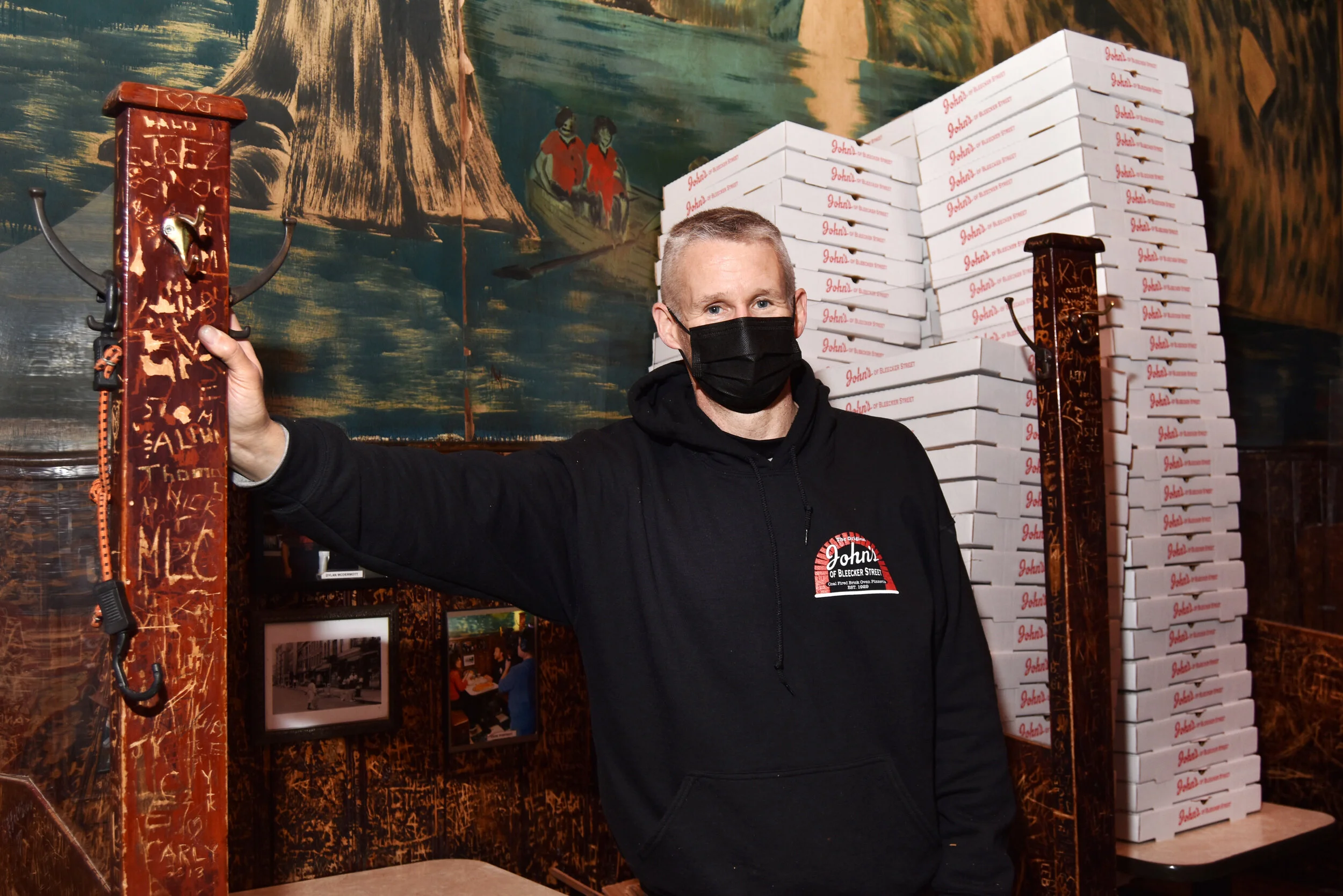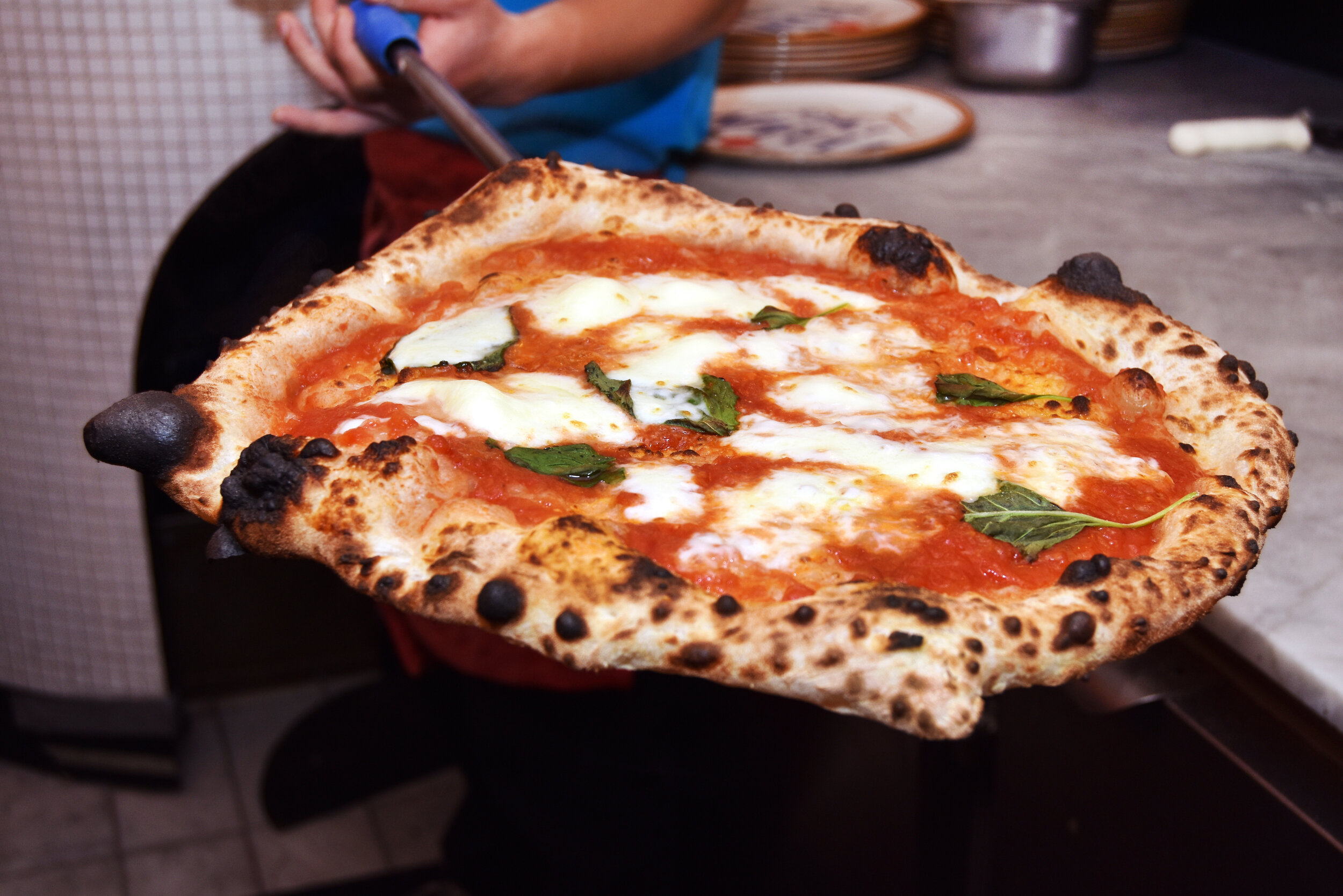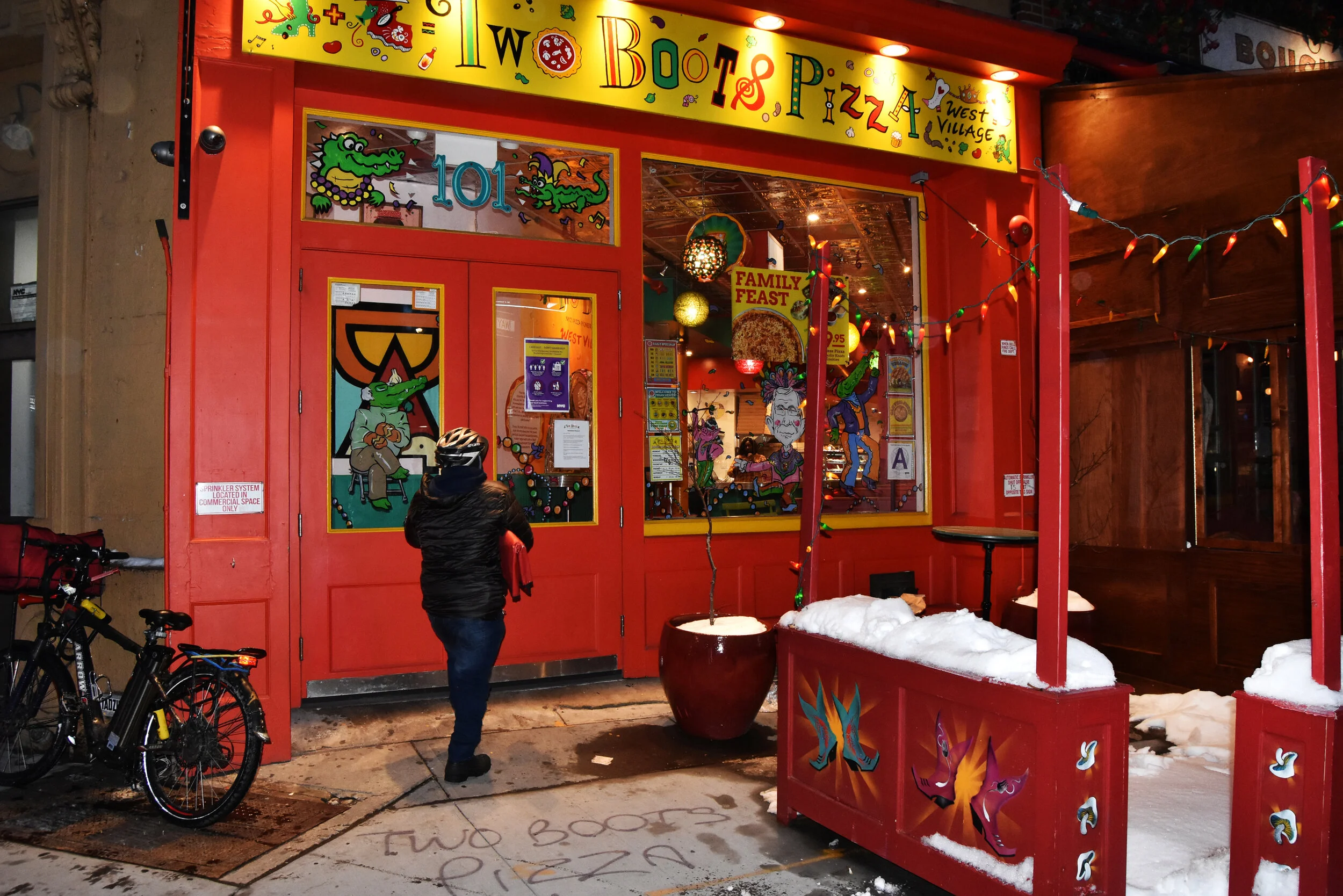Meet the pizza ordering app giving your corner slice joint a fairer piece of the pie
Shop owners and customers alike love Slice, but can they take on the big boys of online ordering?
La Margarita is one of the independently owned pizzerias using the pizza ordering app Slice. Photo: Nina Roberts
Published on the Business of Business on March 4, 2021
The average person in the U.S. eats approximately 46 slices of pizza a year. In pandemic times, pizza's takeout/delivery model is perfectly positioned to send that number even higher. But, pizza lovers who don’t want to see their neighborhood pizzerias choked by national pizza chains or gouged by platforms like GrubHub or UberEats are turning to Slice. It’s the app for the pizza-centric, who want pizza made by local pizzerias, from no frills shops pumping out standard pies, to fancier trattorias firing artisanal pizzas in coal ovens.
Ordering pizza from chain pizzerias’ apps is seamless and convenient, but the pizza is often inferior to mom and pop pizzerias. Pizza enthusiasts have been discovering Slice is equally convenient when ordering a handcrafted pizza from their favorite neighborhood spot with the added benefit of knowing they’re supporting small businesses during the pandemic.
Slice is similar to better-known platforms like GrubHub and UberEats, but charges pizzerias a fair fee. Unlike the giant platforms that charge restaurants 10 to 30% on each order placed, Slice charges pizzerias a flat fee of $2.25 on orders costing more than $10.
Slice founder Ilir Sela in front of Prime Pizza Kitchen in Staten Island. Photo: Nina Roberts
“Our mission is to keep local thriving,” says Slice founder Ilir Sela, currently working from his Staten Island home instead of Slice’s Flatiron District office in Manhattan, following pandemic protocols. Sela launched Slice in its current iteration in 2016 and knows first hand the challenges of operating independent pizzerias. Born in the former Yugoslavia, now Macedonia, and of Albanian descent, Sela comes from a large, extended family of pizzeria operators in and around New York City.
Relatives’ pizzerias were some of the first in Slice’s network. Sela also recalls how early on he strategically parked multiple Nissan Cubes—which he thinks look like pizza boxes—tricked out with Slice logos in front of pizzerias he later approached. “So as to give the pizzeria owner the impression that we were a lot more established than we were,” laughs Sela. He concedes that it was difficult to earn any type of revenue on the nominal fee (formerly $2.00) at first. “But I took a really long, long term view,” says Sela.
Today, Slice’s network of pizzerias and a few regional chainlets number 14,000 to 15,000, and are located across 3,000 cities and towns in the U.S. “We have more than twice the footprint Domino’s nationwide,” notes Sela.
Venture capital firms see the potential in Slice’s vast network of independent pizzerias. It’s received a total of $82 million in funding; the last Series C round in May 2020 for $43 million was led by KKR.
And who doesn’t love pizza? Pizza is an intrinsic part of U.S. culture, transcending ethnicities and social class. It’s affordable and ordered for parties, events or a night at home. “Pizza represents such amazing positivity and celebration,” says Sela, one of the reasons he loves the industry, “it’s such a feel-good product.”
Food data analysis company CHD Expert, the firm behind the 46 slices of pizza a year figure, point out in a recent report that 47% of the country’s pizzerias are independently owned (counting both individual shops and mini chains with up to nine locations). In 2020, despite the pandemic, the pizza market grew 3% and a whopping 11% in Arkansas, Los Angeles, Colorado, Nevada and Kentucky.
But is Slice Saving Independent Pizzerias?
New York City is home to hundreds of independently owned pizzerias. Most establishments prefer orders through their website and to a lesser extent, the phone. The majority of operators begrudgingly use third party apps like DoorDash among others, despite steep fees because it brings in orders. Nearly all pizzeria operators we spoke with love Slice because of its fair pricing, but don’t get a vast number of orders through it.
John’s of Bleecker Street uses Slice. Photo: Nina Roberts
John’s of Bleecker Street is a Greenwich Village institution, established in 1929. According to manager Kevin Jackson, who’s been with John’s for 32 years, approximately 90% of their orders come through their website, 10% from Slice. John’s tried using GrubHub and more recently UberEats, but the experience was horrible. Jackson cancelled UberEats after three days when he saw delivery people balancing pizza boxes on their handlebars rather than using proper pizza bags and racks, as requested.
“I wish I got more business out of them,” says Jackson of Slice, amid dark wooden booths, now piled high with assembled pizza boxes. Jackson describes Slice as easy to operate with no glitches and good customer service; Slice has nearly 800 employees with teams in the U.S., Macedonia and Northern Ireland.
Neapolitan pizza served at Song E Napule in Soho. Photo: Nina Roberts
At Song E Napule, a Neapolitan pizzeria in Soho, owner Ciro Iovine and manager Mandan Budha are in agreement that Slice needs to promote itself more. “Seamless, Grub Hub, they are everywhere,” says Budha.
Slice did release a humorous TV ad in November 2020, which flashes on a fictitious app called “GrubbyEats” with astronomical markups and a squished pizza delivered vertically. “It’s the best thing I’ve seen on TV since March of last year!” says Roberta Pettit, the marketing manager of Two Boots, the colorful pizzeria with seven locations, featuring flavors of Italy and Louisiana. Pettit has noticed a slight increase in orders through Slice recently, and wonders if it’s due to the ad that’s been streaming on Hulu, among other channels.
Two Boots in the West Village. Photo: Nina Roberts
Two Boots doesn’t receive an enormous number of orders through Slice compared with the “predatory” food apps, as Pettit calls them. Despite that, Pettit emphatically loves Slice. “They are the only third party platform that doesn’t steal money from restaurants,” Pettit says of Slice.
Tony Salihaj, owner of Nolita Pizza in Little Italy, estimates Slice generates $600 to $700 worth of business per month, while the better known apps generate $7,000, but the app companies get 25%. Salihaj says he trusts Slice, but because of the “brutal” food ordering market, he, like many pizzeria owners, “have no choice” but to use them. Slice is fairing better in the Lower East Side’s La Margarita Pizzeria, according to manager and chef Brooke Apfelbaum, they received 176 orders from Slice and 5,005 on GrubHub in January 2021.
The Network of Neighborhood Pizzerias is Vast
Nolita Pizza owner Tony Salihaj. Photo: Nina Roberts
Slice is expanding its network of local pizzerias through a traditional sales department and unique initiatives. Slice will create pizzerias’ websites for free if they don’t have one; the ordering function then goes through Slice.
Slice Accelerate was launched in late 2020 and gives pizzerias $15,000-worth of free products and services. The Lushas, who own and operate Prime Pizza Kitchen on Staten Island—where Sela orders pizza for himself—just started the program and has been having preliminary video meetings with Slice staff. Violet Lusha estimates half of their orders are through Slice, the rest through other apps. “Everyone knows about Slice on Staten Island,” says Lusha, who appreciated talking to a human when calling its customer service.
According to Sela, there are 55,000 establishments in the U.S. that could be part of Slice’s network. “So, we've got a long ways to go,” he says.
The main obstacle Slice faces to onboard pizzerias is finding the time to meet. Pizzeria owners typically work non-stop and are bombarded by sales pitches daily; the pandemic adds an extra layer of chaos.
Slice’s long game of collecting a modest $2.25 fee from a vast network has yielded gains. “We're getting healthy revenue, the pizzeria is getting a really fair price and the consumer doesn't get all these menu markups,” says Sela, which he calls a “win-win-win” situation. Sela is aiming for more than a billion dollars in online sales transactions in 2021. Last year, according to Sela, Slice’s transactions were $570 million in Gross Merchandise Value (GMV).
Living in and around hot, fresh pizza his entire life, Sela hasn’t hit any type of pizza saturation point yet. “I don’t think I’ve ever said, ‘I’ve had too much pizza,” reflects Sela, who favors the classic thin crust cheese pizza, “There are moments when I’ve had an entire pie by myself.”
